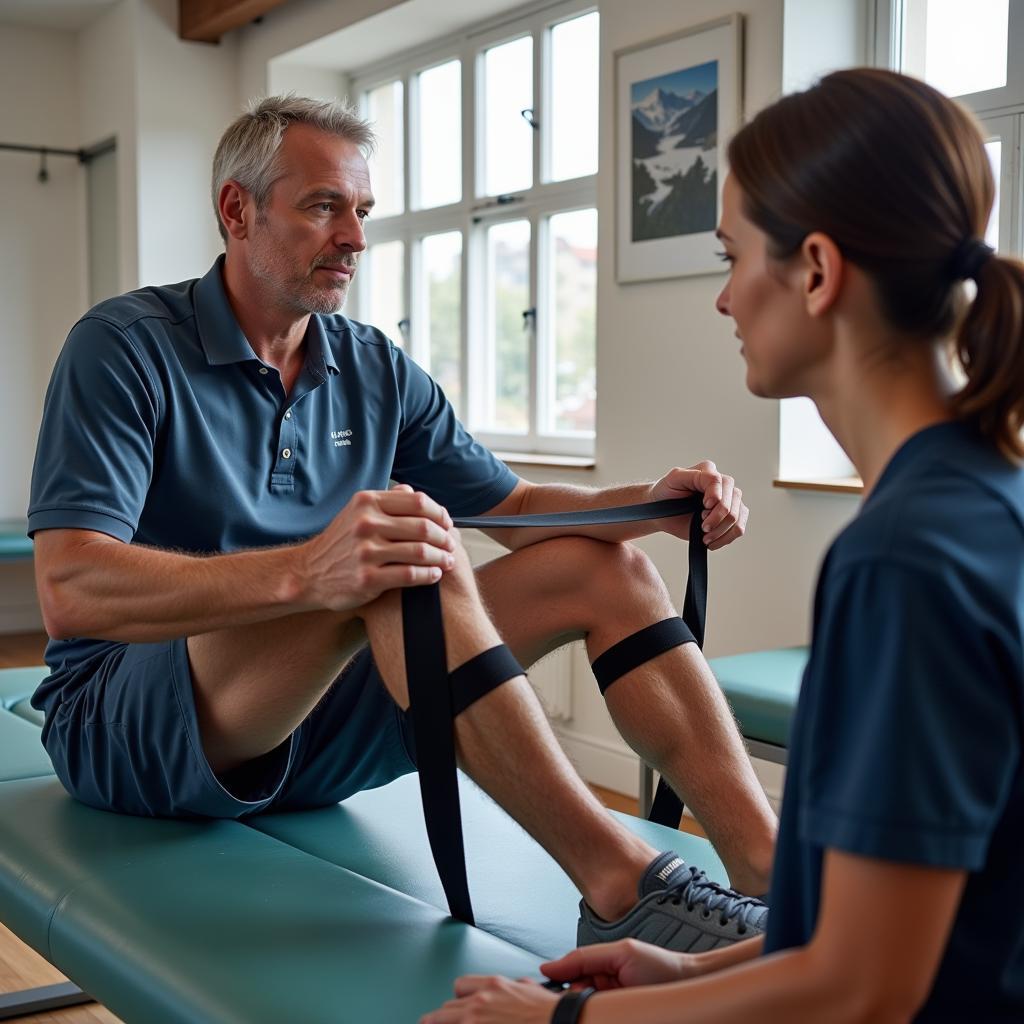Erling Haaland Knee Injury: What We Know
October 12, 2024As a striker who thrives on pace, power, and precision, I know firsthand how crucial it is to stay healthy. Knee injuries are a dreaded setback for any footballer, and unfortunately, I’ve had my own share of struggles.
While specific details about my past knee issues are confidential, I want to use this opportunity to provide some general insights into this type of injury, common treatments, and the importance of a strong recovery.
Understanding Knee Injuries in Football
Football is a demanding sport that puts immense stress on the knees. The quick turns, explosive sprints, and physical tackles can lead to various knee problems, ranging from minor sprains to severe ligament tears.
Common knee injuries in football include:
- ACL (Anterior Cruciate Ligament) Tears: Often caused by sudden stops or changes in direction, ACL tears are among the most serious knee injuries.
- MCL (Medial Collateral Ligament) Sprains: Resulting from impact to the outer knee, MCL sprains are less severe than ACL tears but can still sideline a player for weeks.
- Meniscus Tears: The meniscus acts as a shock absorber in the knee. Twisting or pivoting can lead to tears, causing pain and limited movement.
The Road to Recovery: Treatment and Rehabilitation
Treating knee injuries effectively requires a comprehensive approach tailored to the specific injury and individual needs. Here’s what a typical recovery process may involve:
- Initial Assessment: A thorough medical evaluation, including imaging tests like X-rays and MRI scans, helps determine the extent of the injury.
- Treatment Plan: Depending on the severity, treatment options may range from conservative measures like rest, ice, and compression to surgical intervention.
- Rehabilitation: This phase is crucial for regaining strength, flexibility, and stability in the knee. It typically involves a gradual progression of exercises under the guidance of physiotherapists.
 Erling Haaland Rehabilitation
Erling Haaland Rehabilitation
Importance of a Strong Comeback
Returning to peak performance after a knee injury requires patience, dedication, and a positive mindset. It’s essential to:
- Follow Medical Advice: Adhering to the recommended treatment plan and rehabilitation program is crucial for a successful recovery.
- Listen to Your Body: Pushing too hard too soon can increase the risk of re-injury. It’s vital to gradually increase the intensity and duration of training.
- Stay Positive: Knee injuries can be mentally challenging, but maintaining a positive outlook and focusing on the recovery process is key.
 Erling Haaland Training
Erling Haaland Training
My Experience and Lessons Learned
While I don’t discuss the specifics of my own injuries, I can confidently say that the journey back to fitness has taught me valuable lessons about resilience, perseverance, and the importance of a strong support system.
Surrounding myself with a dedicated team of medical professionals, trainers, and my loved ones has been instrumental in my recovery. Their expertise, encouragement, and unwavering belief in me have helped me overcome challenges and come back stronger.
Remember, every injury, no matter how daunting, presents an opportunity for growth and learning. By embracing the recovery process, staying committed to the rehabilitation plan, and maintaining a positive mindset, athletes can overcome setbacks and return to the game they love.
For more insights into the careers of footballers, you can read about what ended Alfie Haaland’s career and the infamous Keane tackle on Alf Inge Haaland. These incidents serve as reminders of the challenges faced in the sport and the importance of resilience.